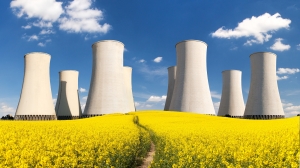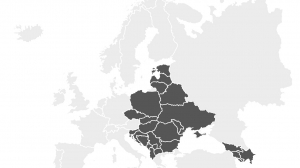After four years of turmoil, Ukraine may finally be turning a corner. The country’s volatile economy is stabilising, and President Petro Poroshenko has pushed through a series of reforms to tackle the rampant corruption that has blighted the country since the collapse of the Soviet Union. With new pledges of financial assistance from the International Monetary Fund (IMF) and World Bank, Mr Poroshenko can now point to an international seal of approval for the changes he has brought to Ukraine.
As has been the case since the Maidan revolution, however, Russia has responded to Ukraine’s newfound stability by ramping up its campaign of hostility. With elections fast approaching, charismatic populist Yulia Tymoshenko is also threatening to oust Poroshenko from power and undo his reforms. Whatever happens, however, the current government must not be distracted from its progressive agenda. Ukrainians have been waiting 25 years for these reforms.
The agreements signed with the United Nations’ twin financial institutions will certainly help bolster Mr Poroshenko’s agenda. The 3.9 billion US dollar loan pledge from the IMF – which comes after a two-year freeze on assistance – and the 750 billion US dollar loan guarantee from the World Bank will enable Kyiv to beef up gold and currency reserves, bolster the exchange rate of the hryvnia and curb inflation which has soared since Ukraine plunged into crisis in 2014. The funding will also boost investor confidence in Ukraine’s fiscal solvency, enabling Kyiv to go to the global market in search of fresh financing. With six billion US dollars in foreign currency debt maturing in 2019, this public show of support could not have come at a better time.
For Mr Poroshenko himself, the agreements are a personal endorsement of the reformist policy platform he has adopted since being elected at the height of the conflict in eastern Ukraine in 2014. Despite regular Russian threats to Ukraine’s territorial integrity, coupled with resistance from the oligarchs who thrived under disgraced predecessor Viktor Yanukovych, Poroshenko has shut down rogue banks, authorised the creation of an anti-corruption court and pushed gas prices up to market levels – a key pre-condition of the IMF’s latest loan. Although it has punished ordinary consumers, the reform is viewed as a key step to cleaning up a market long blighted by kickbacks.
In addition to this raft of reforms – which some analysts describe as the most significant since Ukraine won independence in 1991 – Mr Poroshenko and his government can point to clear economic improvement. GDP has risen by between two and three per cent per year since 2016, after falling 16.4 per cent in the previous two years. Inflation is still running at 14 per cent, around four times the global average, but that’s better than the 43 per cent that crippled the economy at the height of the crisis. Salaries are rising rapidly and trade with the EU is up around 24 per cent on the year, an ideal precursor for the membership application Mr Poroshenko plans to make in 2020.
Limitations
Yet the reform process is far from finished. While Ukraine’s business environment is improving, state-owned monopolies continue to cast a pall over many industries. The gas market may be undergoing much-needed reform, but other parts of the energy sector remain mired in corruption. Mr Poroshenko has promised the anti-graft court will open in February, but the recent reinstatement of Roman Nasirov to the helm of the State Fiscal Service, even as he is being investigated on suspicion of defrauding the state of 70 million US dollars, demonstrates how much more needs to be done.
Given the ongoing threats from Russian forces, however, international observers see the current progress of reforms as an achievement in and of itself. As well as backing secessionist movements in the Donbas, Moscow has most recently seized Ukrainian naval ships in the Sea of Azov and is now building up forces along the border between the two countries. Ukrainians have good reason to fear that Vladimir Putin’s regime, having seized Crimea in 2014, now wants to subjugate the rest of their country.
Since the start of his tenure, President Poroshenko has been in the position of pushing forward with his reformist agenda against this backdrop of Russian aggression. Now, however, he’ll also have to overcome a domestic challenge from Ms Tymoshenko, the former prime minister who will challenge him in next year’s presidential election. As well as being a talented orator, Ms Tymoshenko is notoriously unpredictable: she has previously veered between ardent Ukrainian nationalist and pro-Russian stances, and was even jailed by President Yanukovych over a gas supply deal she brokered with Moscow. In her current political incarnation, she’s campaigning on a pro-EU, pro-NATO platform. It appears to be working, with the latest presidential opinion polls giving her a lead with just three months to go.
Ms Tymoshenko’s slick brand of populism, promising better jobs, higher wages for teachers and quicker progress on corruption with few details on how she would accomplish them, echoes the grandiose rhetoric of her fellow populists in Western Europe and North America. She has promised to “dismantle the entire old system”, including the changes made by the current administration. She’s even vowed to reverse the recent gas market reforms, a move which could jeopardise the landmark deal reached with the IMF.
With the Russians at the gates and Ms Tymoshenko running well in the polls, the new assistance from the IMF and the World Bank are exactly what President Poroshenko needed to help his government push through as much reform as possible before the vote in March. The more progress Kyiv makes in this period, the less likely Ukraine is to return to the crisis that roiled it for so long.






[…] first, by Andrew Wrobel at Emerging Europe (where he is a founding partner), postulates that 2019 will be a critical year for Ukraine – as, no doubt, it will; I am surprised it has staggered all the way to this point. But much […]